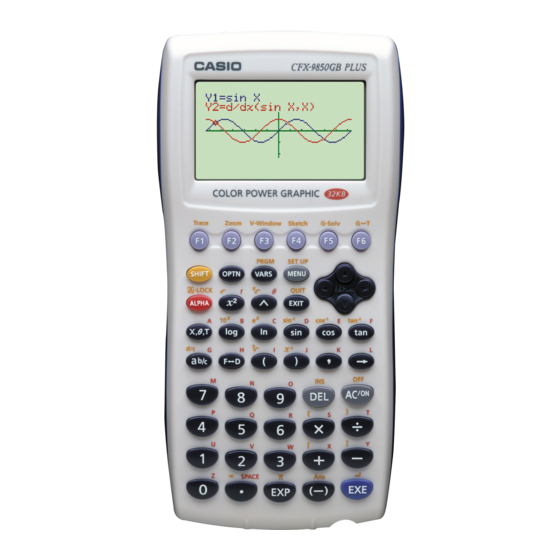Casio CFX-9850G PLUS Grafik-Handbuch - Seite 3
Blättern Sie online oder laden Sie pdf Grafik-Handbuch für Taschenrechner Casio CFX-9850G PLUS herunter. Casio CFX-9850G PLUS 6 Seiten. 6. matrix calculations
Auch für Casio CFX-9850G PLUS: Benutzerhandbuch (18 seiten), Handbuch Kommunikation (13 seiten), Programm-Handbuch (18 seiten), Dieses Handbuch zuerst lesen (13 seiten), Funktion Handbuch (14 seiten), Grafik-Handbuch (8 seiten), Grafik-Handbuch (12 seiten), Grafik-Handbuch (12 seiten), Grafik-Handbuch (12 seiten), Grafik-Handbuch (12 seiten), Grafik-Handbuch (10 seiten), Berechnungen Handbuch (13 seiten), Berechnungen Handbuch (18 seiten), Berechnungen Handbuch (15 seiten), Handbuch Komplexe Zahlen (6 seiten), Berechnungen Handbuch (6 seiten), Berechnungen Handbuch (20 seiten)

